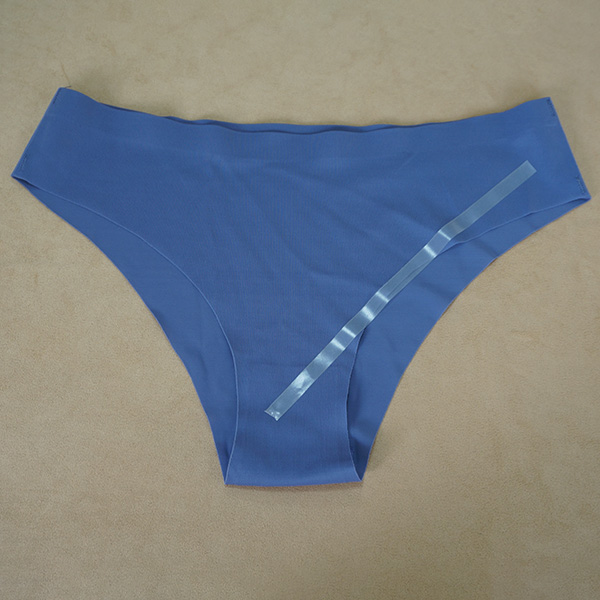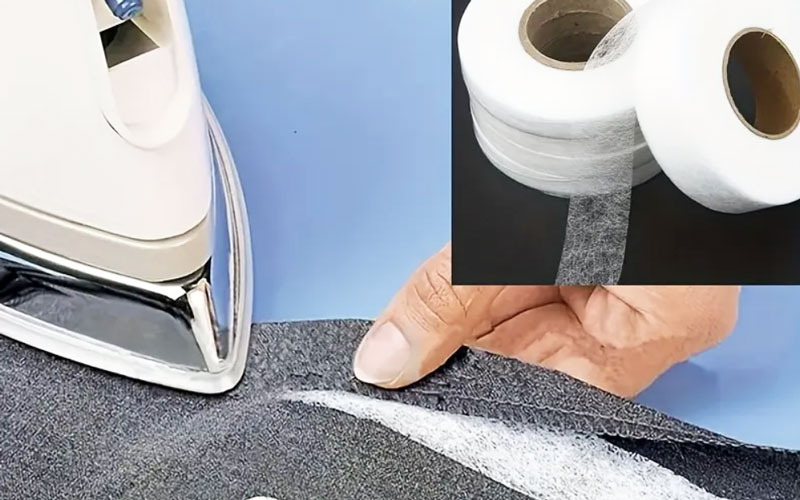The seamless garment industry has grown rapidly over the past decade, driven by consumer demand for comfort, aesthetics, and performance. Whether it’s invisible underwear, sportswear, shapewear, or luxury fashion, one technology has become increasingly critical in achieving a flawless, second-skin fit without visible stitching: pressure sensitive hot melt adhesive (PSHMA).
This adhesive technology enables soft, durable, and invisible bonding between fabrics—without compromising stretch, breathability, or design. In this article, we’ll explore how pressure sensitive hot melt adhesive is transforming the production of no-trace garments, how it compares with traditional sewing and bonding methods, and why it’s becoming the adhesive of choice for modern textile manufacturers.

What Is Pressure Sensitive Hot Melt Adhesive?
Pressure sensitive hot melt adhesive is a thermoplastic adhesive that is applied hot (typically 120°C–180°C) but remains tacky at room temperature. Once applied between fabric layers, it forms a bond when pressure is applied—without the need for additional curing, drying, or stitching.
Unlike other hot melt adhesives, PSHMA retains a soft, elastic, and skin-friendly quality after cooling, which makes it ideal for direct skin contact and stretchable fabrics used in seamless clothing.
This adhesive is often supplied in film, web, or powder form and is compatible with automated lamination, pressing, or ultrasonic equipment—essential for large-scale, precision-driven textile manufacturing.
Why Pressure Sensitive Hot Melt Adhesive for Seamless Garments?
The shift toward stitch-free apparel is not just a fashion trend—it’s a response to lifestyle demands. Consumers today want clothing that feels like skin, with no friction, ridges, or tight seams. Let’s look at why pressure sensitive hot melt adhesive is uniquely suited for this application.
1. Seamless Finish
One of the most important features of seamless garments is the smooth appearance. PSHMA creates a clean, no-trace bond between fabric layers—no thread marks, no bulky seams, no needle holes.
2. Softness and Comfort
Traditional stitching or rigid adhesives may leave stiff edges that irritate the skin. In contrast, pressure sensitive hot melt adhesive remains soft and flexible even after multiple washes, ensuring all-day comfort.
3. High Elasticity
Seamless garments often require high stretch and recovery—especially in sportswear or shapewear. PSHMA moves with the fabric, maintaining bond strength without cracking or detaching under tension.
4. Breathability
Special formulations allow psa hot melt adhesive to maintain air permeability, making it suitable for body-hugging garments designed to breathe and wick moisture.
5. Wash & Wear Durability
PSHMA provides strong resistance to washing, dry cleaning, and daily wear. It doesn’t degrade under heat or detergent exposure and maintains adhesion through 20+ wash cycles in many cases.
6. Eco-Friendly Production
Compared to solvent-based adhesives, hot melt psa is solvent-free, low-VOC, and energy efficient, supporting sustainable textile manufacturing goals.
Common Applications of PSHMA in No-Trace Apparel
1. Invisible Underwear
Women’s lingerie, men’s seamless boxers, and ultra-thin briefs all benefit from PSHMA bonding. The adhesive creates a no-stitch look with edge-to-edge sealing, giving the fabric a natural flow while avoiding pressure points.
2. Sportswear
Athletic leggings, yoga pants, compression tops, and performance bras are often made with 4-way stretch materials. These require elastic bonding that holds during motion, heat, and sweat. Pressure sensitive hot melt adhesive provides strong yet flexible bonds that stay in place through intense workouts.
3. Shapewear
Slimming undergarments rely on tight compression zones and seamless transitions. PSHMA enables body-contouring designs with smooth finishes, without digging seams or pinching fabric.
4. Swimwear
In high-end swimwear, adhesives can be used to attach linings or finishes. PSHMA works with polyamide and spandex blends while resisting salt, chlorine, and sun exposure.
5. Medical Compression Garments
These garments need gentle adhesion on the skin, along with durability and breathability. PSHMA provides a non-toxic, hypoallergenic bonding method that meets medical textile standards.
6. Maternity Wear & Sleepwear
Comfort and softness are paramount. PSHMA allows bonding without bulk, enhancing the gentle, natural feel that these garments require.

How It Works: PSHMA Bonding Process in Apparel Manufacturing
Pre-Treatment of Fabric
Fabrics are cleaned and may be lightly heat-treated for better bonding.Adhesive Application
Film or web form of pressure sensitive hot melt adhesive is placed between two fabric layers.
Automated machines apply precise pressure and heat to activate the adhesive.
Ultrasonic bonding may be used in some cases.
Cooling and Set
After bonding, the assembly is cooled under light pressure to solidify the bond. No curing time is needed.Cutting and Shaping
Laser or die cutting finalizes the seamless profile with clean edges.Testing & Quality Control
Peel strength, stretch tests, and washing durability are verified before packaging.
Why PSHMA Outperforms Traditional Methods in No-Trace Apparel
| Method | Stitching | Liquid Adhesive | PSHMA |
|---|---|---|---|
| Aesthetic | Visible seams | May bleed or discolor | Seamless & invisible |
| Comfort | Friction & pressure points | Potential stiffening | Soft & flexible |
| Speed of Production | Medium | Slow drying | Fast (no drying needed) |
| Stretch Compatibility | Limited | May crack | Highly elastic |
| Wash Durability | High | Medium | High |
| Eco-Friendliness | Neutral | Solvent emissions | Low VOC, solvent-free |
Challenges and Innovations
While pressure sensitive hot melt adhesive offers many benefits, manufacturers must manage the following challenges:
Fabric compatibility: Some ultra-slick or coated fabrics require pre-treatment for better adhesion.
Heat sensitivity: Certain delicate textiles may deform if heat settings are too high.
Bond thickness: Too much adhesive may reduce breathability; too little may reduce peel strength.
Innovations on the Rise
Pattern coating: Applying adhesive in microdots or patterns for greater breathability.
Bio-based adhesives: New formulations using renewable feedstocks.
Laser-activated adhesives: Precise bonding without traditional heat presses.
Market Trends and Demand in Seamless Apparel
With global demand for seamless garments growing, especially in markets like Asia, North America, and Europe, the need for efficient, aesthetic bonding is skyrocketing. Pressure sensitive hot melt adhesive is increasingly used by:
OEMs and ODMs in the underwear and sportswear industries
Luxury fashion brands seeking invisible construction methods
Athleisure brands aiming for comfort + performance hybrids
Experts predict the demand for textile-grade hot melt psa will increase 8–10% CAGR in the next five years.

Conclusion: The Future of Seamless Fashion is Bonded with PSHMA
In the pursuit of elegance, comfort, and performance, the apparel industry is embracing adhesives that are invisible, flexible, and long-lasting. Pressure sensitive hot melt adhesive is at the forefront of this transition, enabling no-trace construction for modern garments.
With its eco-friendly profile, compatibility with high-speed production, and ability to deliver a luxurious feel, pressure sensitive hot melt adhesive is not just a bonding tool—it’s a catalyst for a new era of wearable technology.
If you’re in the seamless apparel business and looking to enhance product comfort, reduce production time, and stay ahead of fashion innovation, now is the time to integrate psa hot melt adhesive into your manufacturing line.
Want to get this type of hot melt adhesive for seamless garment use? Welcome to contact Alster!
